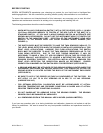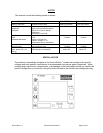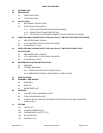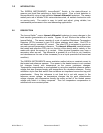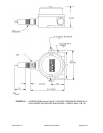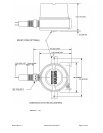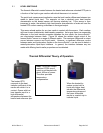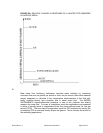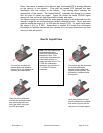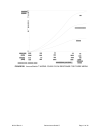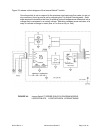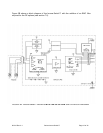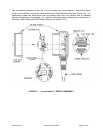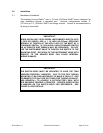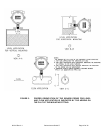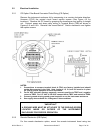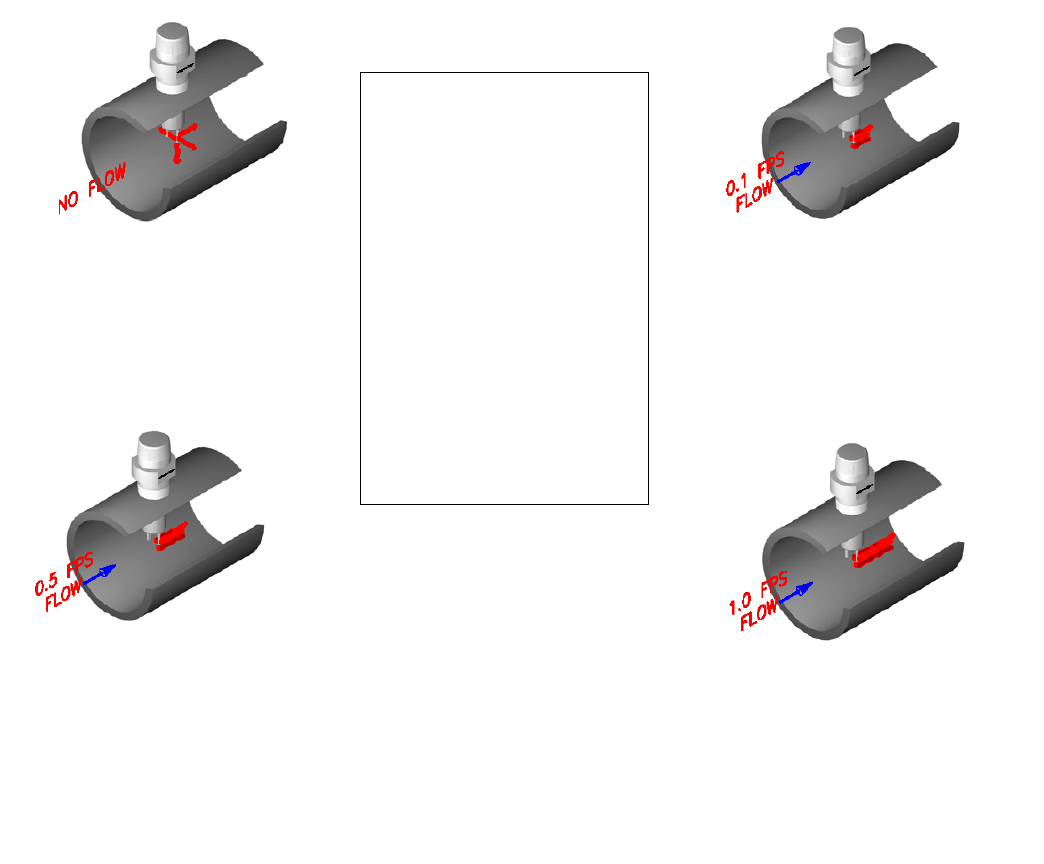
IM-215 Rev-A.1 Series Innova-Switch™ Page 10 of 42
When the sensor is inserted into a liquid or gas the heated RTD is strongly affected
by the velocity of the medium. Flow past the heated RTD changes the heat
transferred from the surface of the sensor. This cooling effect reduces the
temperature of the sensor. The Innova-Switch
™
compares this change to a preset
flow trip point to switch the output. Figure 2B shows the model FS4200 signal
change vs. flow rate for air, light hydrocarbon liquids, and water.
The signal change vs velocity has the same general shape for all three media but the
change is larger for air and the sensitive range is different for each. For air and most
gaseous media the range is 0.1 to 500 feet per second (FPS). For most liquid media
the range is 0.01 to 5 FPS. Appendices in section 9.0 contain flow conversion
information to facilitate conversion from various units and pipe dimensions into flow
velocity in feet per second.
Gas Or Liquid Flow
Note: The fluid velocity and
heat absorption ability
determine the differential
between the tips. Their
combination determines the
measurable velocity. In
water velocities from 0.01 to
5 FPS are measurable,
whereas in air velocities of
0.1 to 500 FPS can be
measured.
For a no flow condition the
thermal differential between
the two tips is high because of
relatively low heat transfer.
Flow across the tips decreases
the thermal differential
because of the higher heat
transfer of flowing fluids. This
differential is compared with
the trip point.
When the lower differential
matches the customer select
flow velocity trip point (set
point) the switch relay and
red LED are tripped.
When flow is above the trip
point the differential is smaller
than at the set point and the
relay and Led remain tripped.



